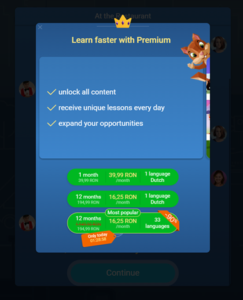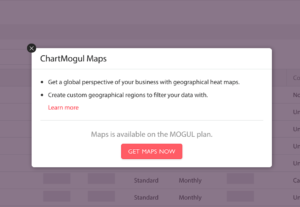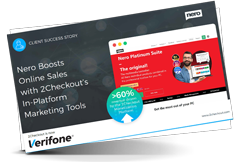In eCommerce, where customers act quickly, often on impulse, and their expectations change fast, it’s critical to maximize customer value. The question is, how? One effective way is through upselling, which can lead to a significant increase in revenue, averaging between 10% and 30%.
What is upselling? The technique of encouraging customers to purchase higher value products than they originally intended. It is an approach that not only increases average order value (AOV) and immediate revenue, but also nurtures long-term customer relationships. For companies seeking sustainable growth, upselling is proving to be a powerful strategy!
In this article, we’ll delve into upselling best practices and techniques to serve as a checklist to make sure you’re not missing any obvious options, and hopefully learn a few new tricks along the way.
As we explore upselling best practices and techniques, it becomes clear that the goal is not just to increase transaction amounts, but to provide real value to customers and improve their overall experience.
We will cover effective upsell strategies, review best practices to guide your approach, discuss implementation options, and examine the role of data analytics in identifying upsell opportunities.
Before we dive in, let’s clarify the difference between upselling and cross-selling. We have already established what upselling is. Cross-selling is the recommendation of additional products that complement the primary product being purchased. In practice, there is some overlap, as upselling tactics can include elements of cross-selling.

The difference between upselling and cross-selling
Upselling Best Practices
Know your customers
Understanding your customers is at the heart of successful upselling for online businesses. Especially since it is easier to upsell returning customers than new ones.
When you have a deep understanding of your customers’ preferences, behaviors, and needs, you can tailor your upselling strategies to resonate with them. You’ll know the best way to upsell to your customers.
Create defined customer segments and integrate them into your outreach to optimize engagement. In addition to customer segmentation, you can use health scores as campaign triggers.
Don’t ignore the power of … asking. Conduct surveys and learn more about what customers care about.
Personalize the customer experience
The next step is to use data to personalize your customers’ experience in your online store or in your SaaS or mobile app (if you have one). Remember, we talked about the importance of data analysis in the introduction. This is where it comes in.
You can use data to recommend products based on a customer’s past (recent) purchases or browsing history. Personalized recommendations improve the customer experience and make upsell suggestions more appealing. Use advanced analytics tools to gain deep insights into customer behavior. Implement tools to track customer behavior on your website and in-app and correlate it with your CRM data. Sophisticated analytics help uncover patterns and trends, so you can make data-driven decisions for more effective upsell campaigns.
Implement personalized content and recommendations on the website as well as via targeted marketing emails, and other channels like SMS or social media.
Hyper-personalize with AI
Recommending products to users based on their behavior is a basic best practice in website personalization. You can take this to the next level with AI, which is not just hype, but can actually help your online store deliver more accurate personalization. For example, an AI-based product recommendation engine can display up-sell widgets to site visitors on relevant pages – product, home or shopping cart pages. This helps online stores increase conversion rates and average order value (AOV).
You can complement this with AI chatbots that provide additional shopping assistance and product recommendations powered by Generative AI.

Position upsells as value add
When introducing an upsell, the key is to focus on the value the customer will receive, rather than the cost. This effective approach focuses on a customer-centric mindset, emphasizing how the upsell actively contributes to the customer’s success.
By clearly articulating the value of the upsell and highlighting the additional functionality of the upgraded offering, the goal is to create a narrative that positions the upsell as an essential tool for achieving faster and superior results, or simply delighting the customer.
In essence, prioritizing the value of the upsell serves as a strategic countermeasure to the potential drawbacks associated with the technique. Upselling runs the risk of being perceived as a pushy sales tactic or an attempt to deceive the customer, so emphasizing value acts as a proactive measure to counter such negative perceptions.
Set a cap on price increases
Ideally, you should aim for a price increase that stays within 50% of the customer’s original purchase, maintaining a balance between maximizing profitability and aligning the perceived value of the upsell with customer expectations. You risk losing the customer altogether if you try to upsell a product that is much more expensive.
Knowing when to upsell
The best time to present an upsell offer is shortly after the customer has committed to the primary purchase. In some cases, to make sure you don’t lose the primary sale, you can even upsell after the purchase is completed. We’ll talk more about how to do this in the techniques section.
Avoid decision overload
Prevent upsell decision overload by limiting the number of options and providing customers with a focused and manageable selection for a streamlined decision process.
Use social proof to reduce decision fatigue and provide customers with reassurance and guidance to simplify their choices.
At the same time, use (and test!) a bunch of options – the sweet spot is usually a mix of upsell and cross-sell, which gives you a better chance of conversion. For example, you might offer an upsell on the product page and a cross-sell on the shopping cart page.
Also consider downselling if you see a lot of abandonment, especially for certain product lines. Downselling can take several forms: smaller pieces of the larger offer, a product that costs less (and has less value). For total cart abandonment, consider different tactics, such as following up through other channels in the hours/days/weeks after the abandonment to send reminders or offer related products, or site exit intent offers.
Incentivize with bonuses and rewards
Offer loyalty points, future discounts, or digital perks for larger purchases. This not only enhances the buyer’s immediate shopping experience, but also creates a long-term connection with your brand. The prospect of accumulating benefits over time fosters a sense of value and appreciation, and perhaps a bit of FOMO, that encourages customers to make repeat purchases and choose your products or services over competitors.
Now that you’ve mastered upsell best practices, let’s dive into the best ways to upsell products.
Upselling Techniques
Oldies but goldies: Bundles and deals
Package deals are easy to spot and explain. They involve offering customers grouped products or services at a discounted rate. Basically, you buy more of the same thing at a better price per unit.
The value proposition is primarily about cost savings, but in some cases, such as subscriptions, it includes a time aspect. This allows customers to experience the same product or service over an extended period of time without interruption.

Example of package deal. Source: malwarebytes.com
The possibilities are endless. You can combine different options, free-to-paid upgrades with package deals, and so on. Here’s an example of such a combination, maybe with a little too much going on? The squirrel slid in and got my attention, so it can stay!

Example of free-to-paid upgrade combined with a package deal. Source: mondly.com
Now, bundles are the cousins of upselling and cross-selling. Upselling with bundles is a strategic tactic in which companies combine related products or services into a single package to offer customers a more complete solution. This approach entices customers with discounted pricing or added value, improving their overall buying experience.

Bundles that boost the AOV. Source: harrys.com
Another tactic is to upsell the current product with a bundle of the same product plus a complementary product. You can also offer the complementary product in the bundle for free as an added incentive.

Example of a bundle with a free product included. Source: nero.com
Upsell one-time purchases with subscription offers
Boost your revenue by attracting customers with subscription offers, creating a consistent revenue stream, and nurturing long-term customer relationships. Increasingly used for physical goods, not only digital products.

Subscription upsell and free shipping incentive for higher AOV. Source: 1Body.com
In-cart recommendations
In the e-commerce landscape, cross-selling tactics are often implemented within the shopping cart by presenting customers with suggestions such as “You might also like these” or “Others have bought these”. These prompts are designed to introduce complementary or related products to enhance the customer’s purchase.
On the other hand, strategies that focus on upselling in the cart often include incentives tied to order thresholds. For example, encouraging customers to spend a certain amount to qualify for free shipping, or offering volume discounts for larger purchases. This tactic aims to maximize the value of the customer’s cart in the final stages of the purchase process.
A good upsell tactic related to shipping and delivery is to use personalized messages in the cart based on the shopper’s location.
Alternatively, consider an Ajax cart presentation where an offer appears below or above the existing items as a product is added to the cart, allowing shoppers to quickly add to their order.
Upsell incentives can also be displayed on product configuration pages before the cart review stage.

Incentivize the customer to spend more to get free shipping. Source: vistaprint.com
There are also other ways to display upsell offers, such as through an overlay or on an interstitial page.

Example of an upselling display option in cart – overlay (2Checkout functionality)

Example of an upselling display option in cart – interstitial (2Checkout functionality)
Curious what worked for software and SaaS businesses? Check out this webinar on how to innovate your shopping experience with A/B testing and analytics.
Use limited-time offers
Limited-time offers inject a sense of urgency that encourages customers to act quickly. The element of scarcity not only captures attention, but also creates a fear of missing out (FOMO) that compels customers to take advantage of the opportunity.
Time sensitive deals not only drive short-term revenue spikes, but also foster a sense of exclusivity, enticing customers to take advantage of unique offers.
Upsell prompts
Upsell prompts are similar in appearance and timing to free-to-paid upgrade prompts.
These prompts are most often used in SaaS applications, targeting power users who have been on a basic or lower tier plan for a period of time. They are triggered by reaching a high level of product usage or the user’s need to expand their access or improve their overall experience.

Example of SaaS upselling prompt displayed in-app. Source: Chameleon: ChartMogul modal
Upsell on the Thank You page
Presenting the offer after the customer has completed their initial order eliminates the risk of abandonment and ensures a win-win situation, as the offer does not impact conversion rates, but can only increase revenue.
“Post-purchase upsells convert like crazy,” Reconvert.io.
Feel free to upsell higher-priced products, subscription plans, or options with longer terms and more features.
There are several ways to display these offers, such as a banner embedded in the thank you page.

Example of upselling banner displayed on the Thank You page (2Checkout functionality)

Example of upselling on an interstitial page displayed after purchase and before the Thank You page (2Checkout functionality)
Whatever techniques you use, remember this: Make the upsell easy! Accepting the upsell offer should be effortless. Don’t add friction to the buying process. A single click should be all it takes to take advantage of the upgraded product or service.
The ultimate goal is to improve the overall customer experience. By accepting the upsell, customers should perceive a significant improvement in the quality and efficiency of the services or products they receive. This positive experience becomes a compelling factor in their decision-making process.
In addition to the strategies discussed, it’s critical to explore multiple channels for upselling, such as email or social media. By leveraging these platforms, companies can deliver personalized and timely upsell offers directly to their audiences. Whether through targeted email campaigns or strategic social media promotions, companies can tap into the specific preferences and behaviors of their customers to provide relevant upsell opportunities. This multi-channel approach not only extends the reach of upselling efforts, but also enhances the overall customer experience, contributing to increased revenue and sustained customer loyalty.
Final Thoughts on Upselling
A successful upselling strategy starts with understanding your customers, their needs, and the ideal time and way to present upsell offers. It involves finding the right balance of price increases, using a mix of upsell and cross-sell, and strategically placing offers.
Follow these practices, and your company can increase revenue, improve customer satisfaction, and cultivate customer loyalty.
Selling software or SaaS? Easily configure upselling campaigns with 2Checkout (now Verifone). Read about how our customers are leveraging our platform’s marketing tools and the results they record:

